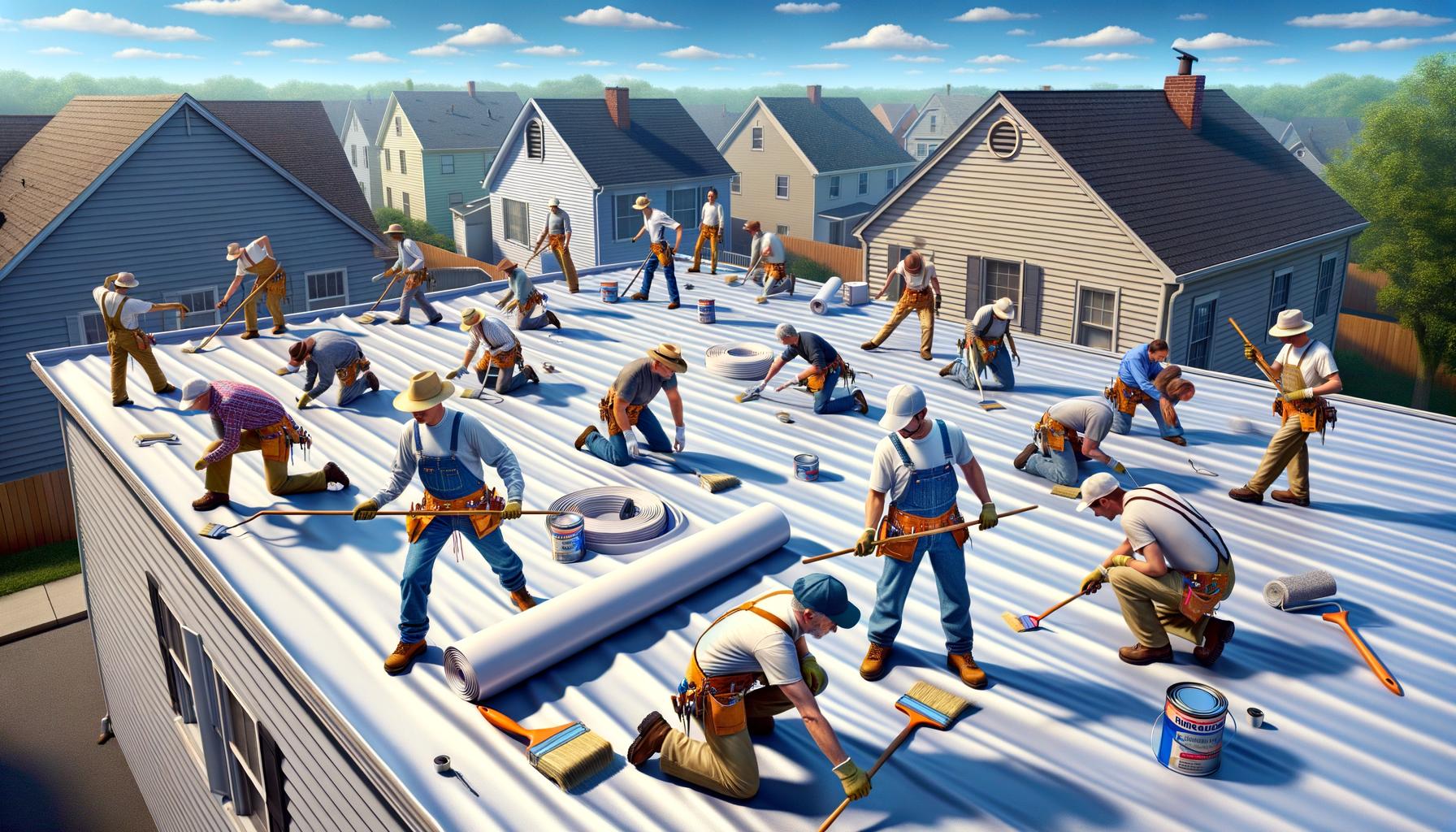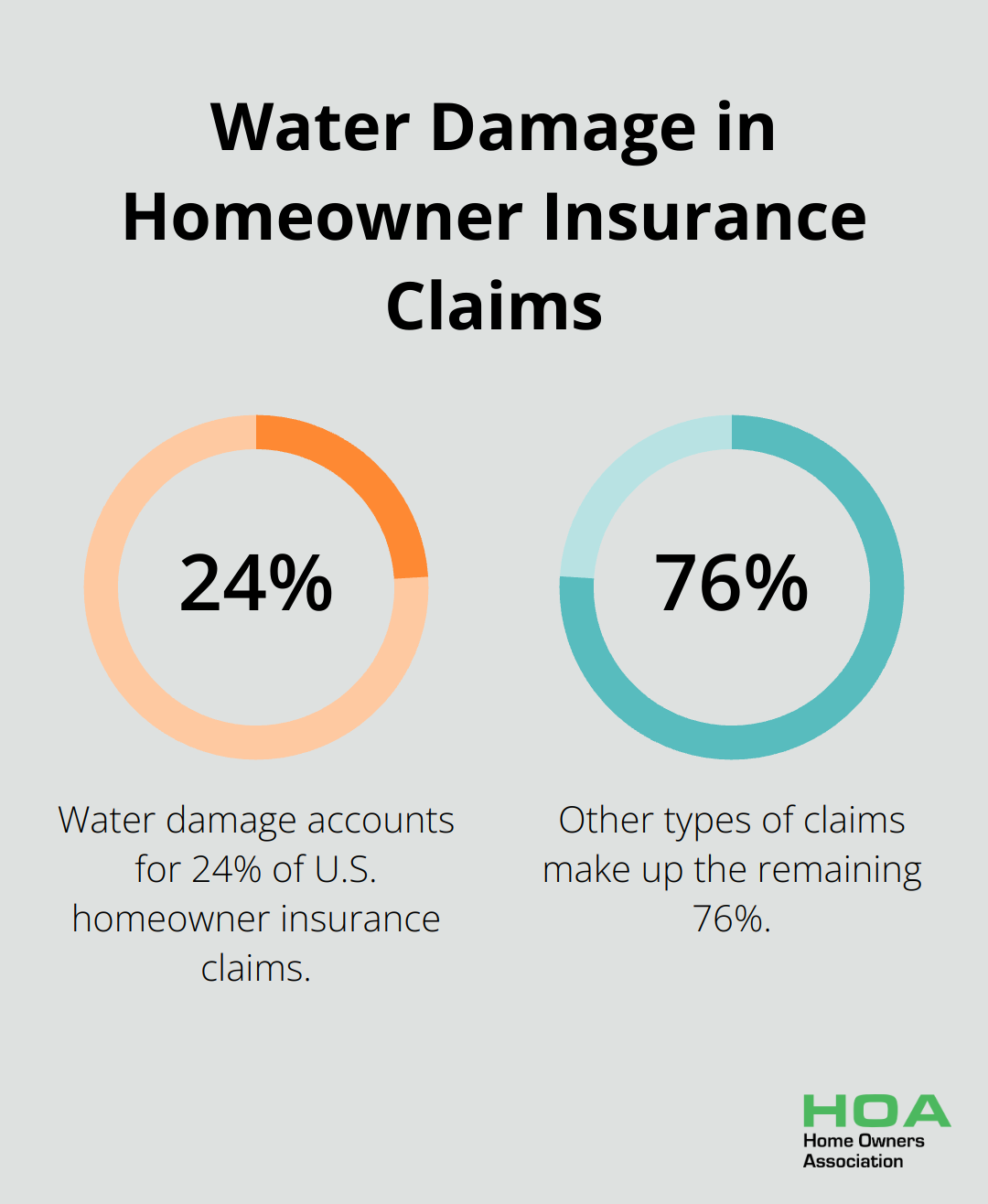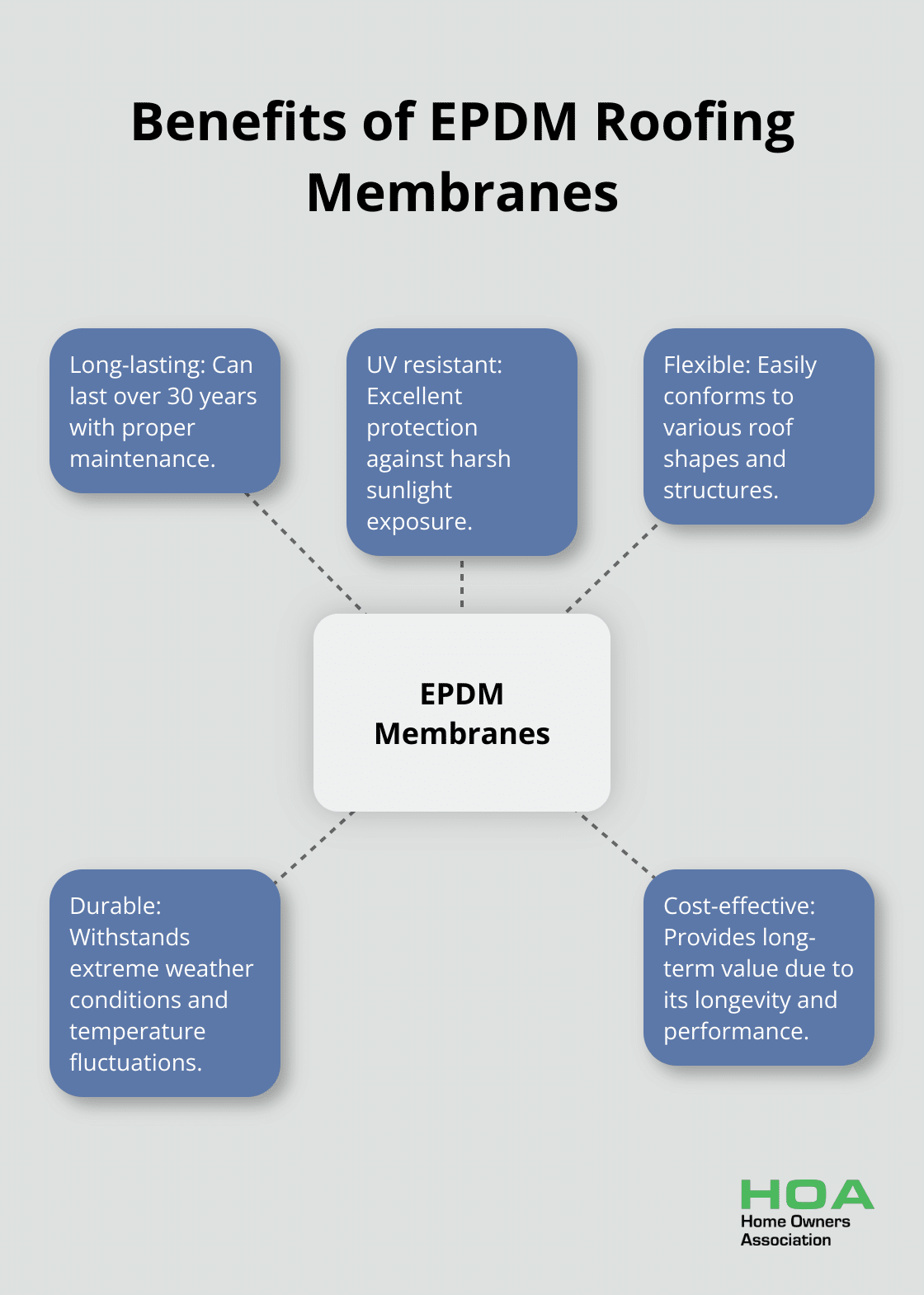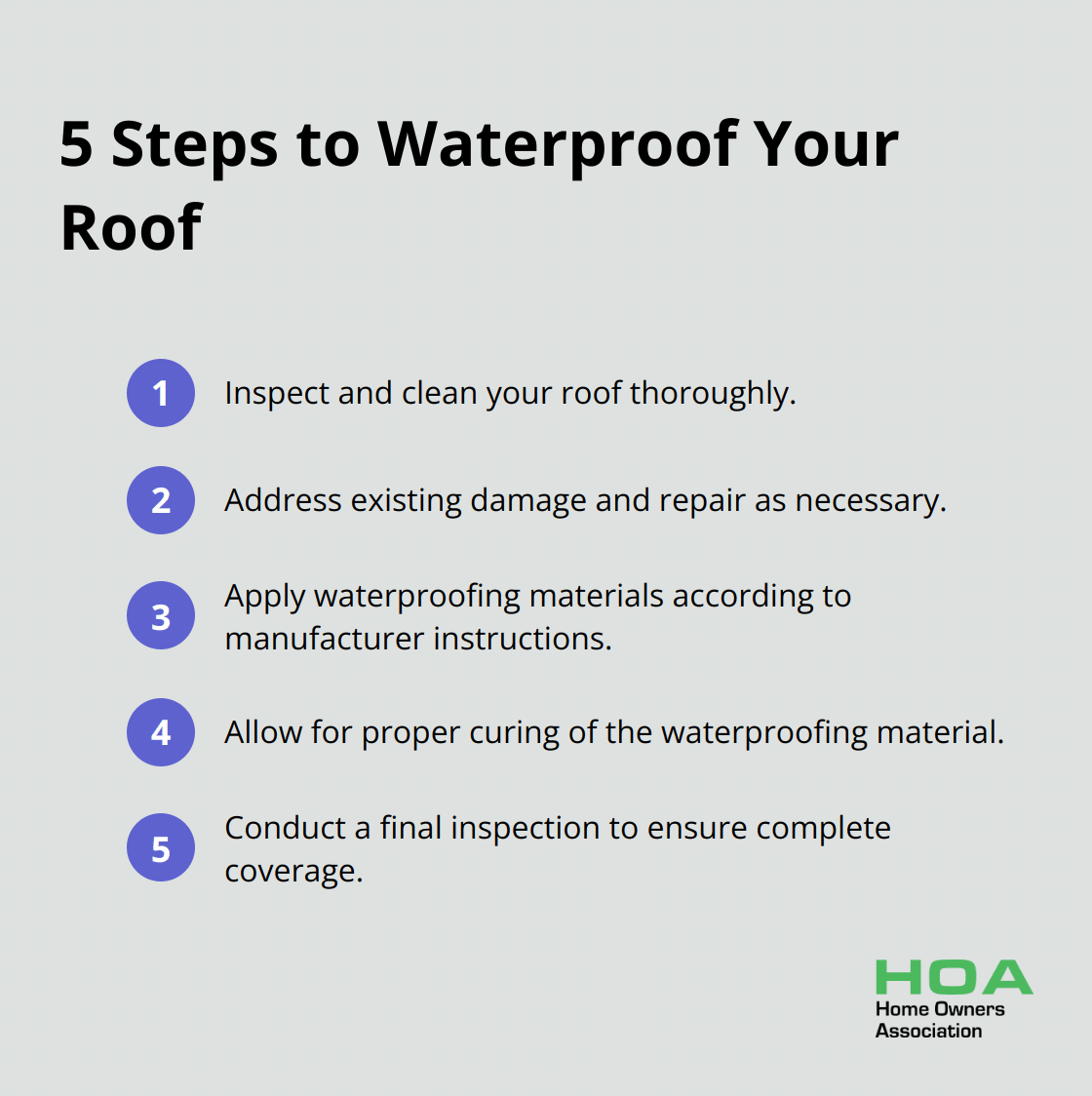
At Home Owners Association, we understand the critical role a well-maintained roof plays in protecting your home. Waterproofing your roof is a key aspect of this maintenance, safeguarding your property from water damage and extending its lifespan.
In this guide, we’ll explore effective methods for waterproofing your roof and provide a step-by-step approach to help you tackle this important task. Whether you’re a DIY enthusiast or considering professional help, this information will equip you with the knowledge to make informed decisions about your roof’s protection.
Why Waterproofing Your Roof Matters
Protection Against Water Damage
Water infiltration poses a significant threat to homes. Even minor leaks can result in extensive structural damage over time. Water damage comprised almost 24% of all U.S. homeowner insurance claims for the most recent year full data is available. Effective roof waterproofing creates a robust barrier against these costly issues, protecting your investment and peace of mind.

Extended Roof Lifespan
A properly waterproofed roof lasts significantly longer than an unprotected one. EPDM roofs can last up to 40 years or more when installed by a manufacturer-certified roofer using a fully-adhered application method. This translates to fewer replacements and substantial cost savings over the years (potentially thousands of dollars).
Improved Energy Efficiency
Waterproofing doesn’t just keep water out; it also helps regulate your home’s temperature. The U.S. Department of Energy estimates that a properly sealed and insulated roof can reduce heating and cooling costs by up to 15%. This results in lower energy bills and a reduced carbon footprint, benefiting both your wallet and the environment.
Health Hazard Prevention
Moisture intrusion creates ideal conditions for mould and mildew growth. The Environmental Protection Agency warns that mould exposure can lead to various health issues, including allergic reactions and asthma attacks. A watertight roof not only protects your home’s structure but also safeguards your property and family’s health.
Cost-Effective Home Improvement
Roof waterproofing stands out as a proactive measure that yields significant returns in protection, efficiency, and peace of mind. While the initial investment might seem substantial, the long-term benefits (reduced repair costs, lower energy bills, and improved home value) far outweigh the upfront expenses.
As we move forward, let’s explore the various methods available for effective roof waterproofing, ensuring you can make an informed decision on the best approach for your home.
Choosing the Right Roof Waterproofing Method
Selecting the appropriate waterproofing method can significantly impact a roof’s longevity. Let’s explore the most effective options available to Australian homeowners.
Liquid Waterproofing Membranes
Liquid membranes have become popular due to their seamless application and versatility. These coatings form a continuous, flexible barrier that adheres tightly to the roof surface. EPDM membranes can last over 30 years with proper maintenance. They resist UV radiation well, which makes them an excellent choice for exposed roofing systems.

Polyurethane-based membranes stand out as an excellent option. They offer superior UV resistance and can withstand the harsh Australian sun. These membranes work particularly well for roofs with complex shapes or numerous penetrations, as they conform easily to irregular surfaces.
Sheet Membranes
Sheet membranes provide robust protection for flat or low-slope roofs. EPDM (Ethylene Propylene Diene Monomer) and TPO (Thermoplastic Polyolefin) are two popular choices. EPDM membranes can last over 30 years with proper maintenance. They resist UV radiation well, which makes them an excellent choice for exposed roofing systems.
TPO membranes offer excellent energy efficiency. A cool roof is designed to reflect more sunlight than a conventional roof, absorbing less solar energy. This lowers the temperature of the building.
Bituminous Coatings
Bitumen-based waterproofing remains a cost-effective solution for many Australian homes. Modern modified bitumen membranes incorporate polymers for increased flexibility and durability. These systems can last 20-30 years with proper installation and maintenance.
A key advantage of bituminous coatings is their ability to self-heal minor punctures. This feature proves particularly useful in areas prone to hail or falling debris.
Factors to Consider
When choosing a waterproofing method, you must factor in your local climate, roof structure, and budget. Consulting with a certified roofing professional will help determine the best solution for your specific needs.
The initial investment in a high-quality waterproofing system pays off in long-term protection and peace of mind. Don’t compromise on materials or installation – your roof’s integrity depends on it.
Now that we’ve covered the main waterproofing methods, let’s move on to the step-by-step process of applying these solutions to your roof.
How to Waterproof Your Roof Step by Step
Inspect and Clean Your Roof
Start with a thorough inspection of your roof. Look for damage such as cracks, blisters, or loose shingles. Focus on areas around chimneys, vents, and skylights, as these are common leak points. The National Roofing Contractors Association provides a vast technical library and guidance regarding building codes and standards, correct roof system installation and design assistance.
Clean the roof surface meticulously. Use a power washer to remove dirt, debris, and loose materials. For stubborn stains, apply a mixture of water and trisodium phosphate (TSP). Ensure the roof dries completely before you proceed – trapped moisture under waterproofing materials can cause future problems.
Address Existing Damage
Repair any identified damage. Fill small cracks with roofing cement or sealant. For larger issues, replace damaged shingles or sections of the roof. Don’t cut corners on repairs – addressing these issues now will ensure the longevity of your waterproofing efforts.
For flat roofs, pay attention to low spots where water pools. These areas are prime candidates for leaks. Consider adding tapered insulation to improve drainage and prevent water accumulation.
Apply Waterproofing Materials
Now, apply your chosen waterproofing material. If you’re using a liquid membrane, first apply a primer to improve adhesion. Use a roller or sprayer to apply the primer evenly across the roof surface.
Once the primer dries, apply the waterproofing membrane. For liquid applications, use a roller or squeegee to ensure even coverage. Pay extra attention to seams, corners, and areas around roof penetrations. These areas often require additional reinforcement with fabric mesh or tape.
For sheet membranes, carefully unroll the material and adhere it to the roof surface according to the manufacturer’s instructions. Overlap seams by at least 3 inches and use a seam roller to ensure a watertight bond.
Proper application is essential. A Roofing Industry Alliance for Progress study examining low-slope roof systems found that roofs with robust maintenance programs lasted longer. If you lack confidence in your abilities, hire a professional to ensure the job is done correctly.
Allow for Proper Curing
Allow the waterproofing material to cure fully before exposing it to foot traffic or harsh weather. Curing times can vary significantly (depending on the product and weather conditions), so always follow the manufacturer’s recommendations.
Conduct a Final Inspection
After curing, perform a final inspection. Look for any missed spots, bubbles, or areas of poor adhesion. Address these issues immediately to ensure complete protection.
Waterproofing your roof is a significant undertaking, but the benefits far outweigh the effort. With proper execution, you’ll protect your home from water damage for years to come. If you’re unsure about any aspect of the process, consult with a roofing professional or reach out to Home Owners Association for guidance.

Final Thoughts
Waterproofing your roof protects your home’s longevity and your family’s comfort. This investment prevents water damage, enhances energy efficiency, extends your roof’s lifespan, and safeguards your health by preventing mould growth. The benefits of a well-waterproofed roof extend far beyond mere protection from the elements.
Regular maintenance ensures your waterproofing efforts remain effective over time. Schedule annual inspections to catch and address any issues early. Keep your roof clean, free of debris, and promptly repair any damage you notice.
While many homeowners can tackle basic waterproofing tasks, complex projects often require professional expertise. If you’re unsure about any aspect of roof waterproofing, seek help from qualified professionals. At Home Owners Association, we provide Melbourne homeowners with access to trusted experts and resources for their waterproofing projects.





